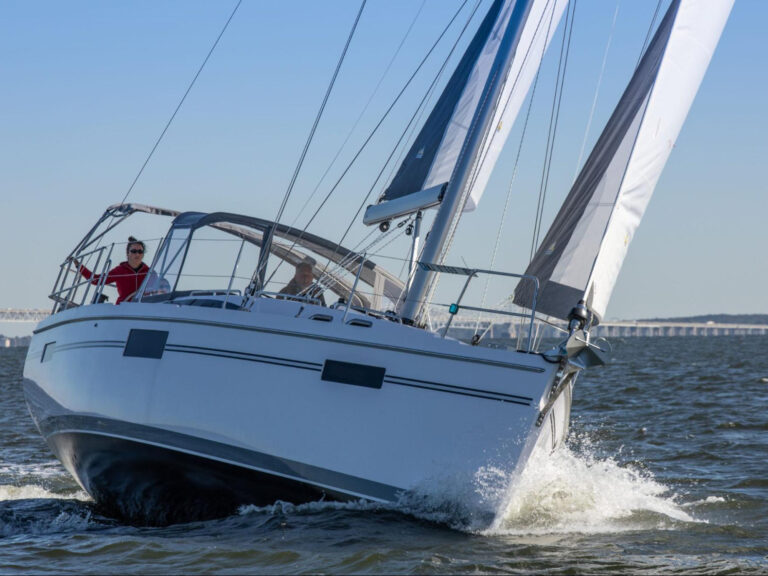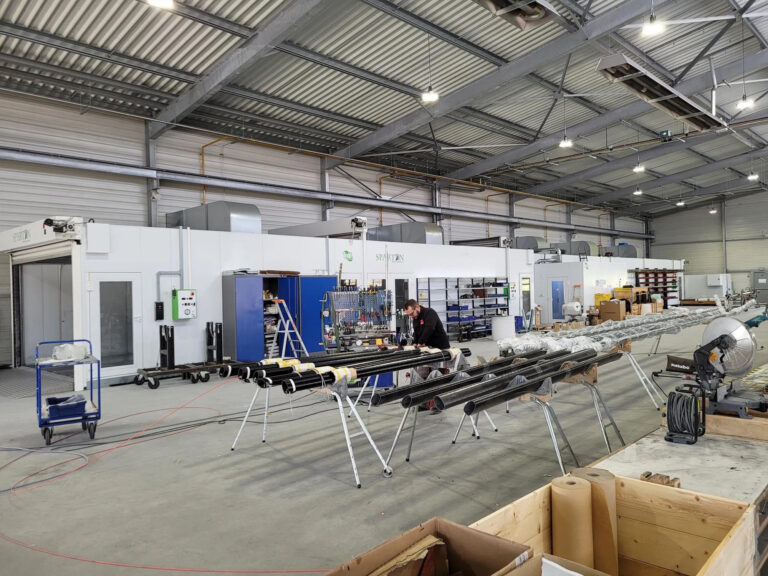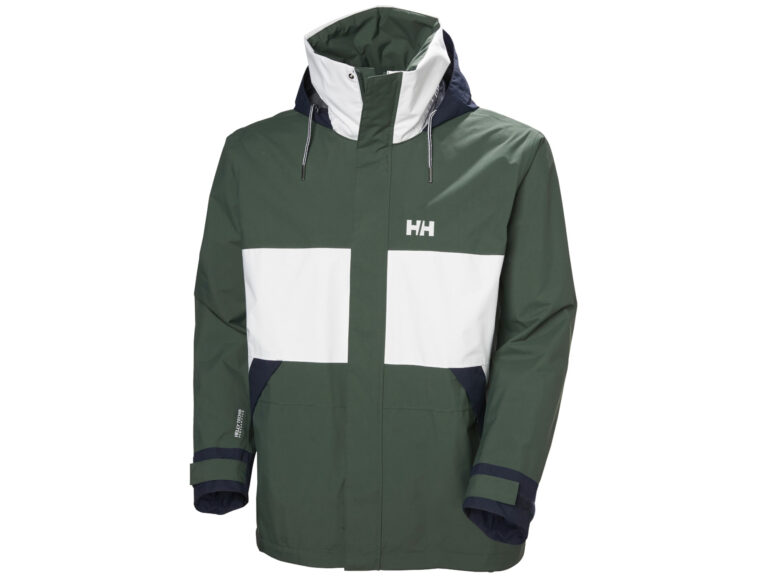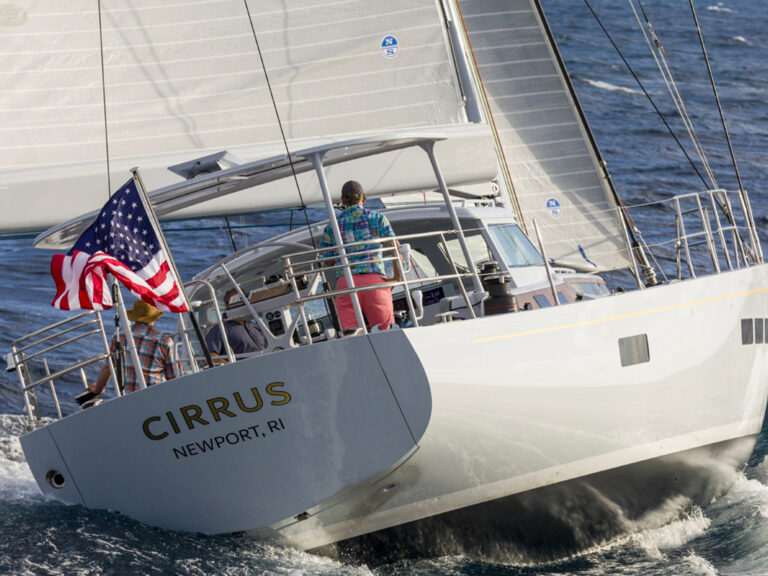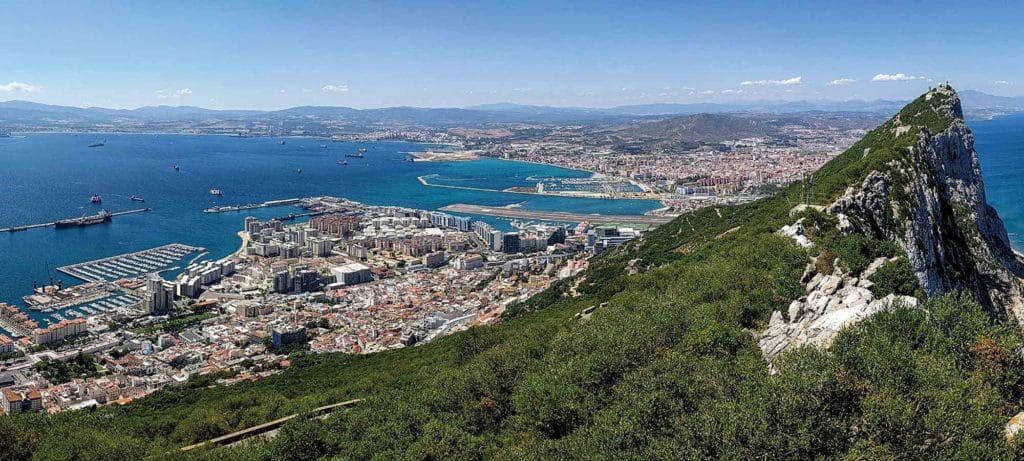
Overhead the sky still swirled with torn gray clouds, while below, a decaying leftover chop lapped at the hull as our three-cylinder diesel ticked over another hour on the meter. The wind died with the sunrise, and by midmorning we were finally closing in. Moroccan highlands stretched off to the south, and the bold ranges of the Iberian Peninsula formed an imposing sight straight ahead. We slowly passed a handful of small fishing boats long accustomed to working here, one of the world’s most celebrated waterways. But my wife, Clare, and I were all butterflies and photographs. After 10 days of lonely sea aboard Champagne, our Dufour 35, we suddenly found ourselves feeling pinched between the masses of two continents. We joined the marching parade of AIS triangles on our chart-plotter screen, rounded the last bit of Spanish headland and entered the Strait of Gibraltar.
Having sailed almost exclusively within the steady reckoning of trade-wind waters, Clare and I struggled to cope with the volatile nature of the Mediterranean. Even while still out in the Atlantic, this great sea dictated our schedule. The previous day, we were prudent to reduce sail and slow down our progress upon nearing the strait in order to avoid 40-knot headwinds that were barreling out from the Med. Once we entered, the wind was calm, then a day later, it reversed direction and blew once more with equal gusto.
We left Gibraltar and headed for the Balearic Islands of Spain, tallying up more engine hours (due to light winds) in that four-day passage than we did crossing the bulk of the Atlantic between Bermuda and the Azores. Then, almost as soon as we got the anchor down in Formentera, a burst of hot, ovenlike air blew around the protective headlands, causing at least one nearby boat to drag.
Despite all we’ve learned during our first season here, we still feel a bit out of our depths — often quite literally. Not only are the anchorages much deeper in the Med than we are used to, but also the coastlines are much steeper. Every anchorage, no matter how picturesque, is fraught with worry: Will the wind shift in the night, leaving us exposed to a leeward wall? Or will it increase and come spilling down over these cliff faces? Or will it die altogether and leave us bouncing between beam seas? We learned the hard way on a couple of occasions, even hitting an uncharted submerged rock in the middle of the night after a 180-degree wind shift in what was otherwise 15 feet of surrounding water. Like the closely stacked depth contours of this region, the learning curve here is steep, but the rewards are worthwhile.
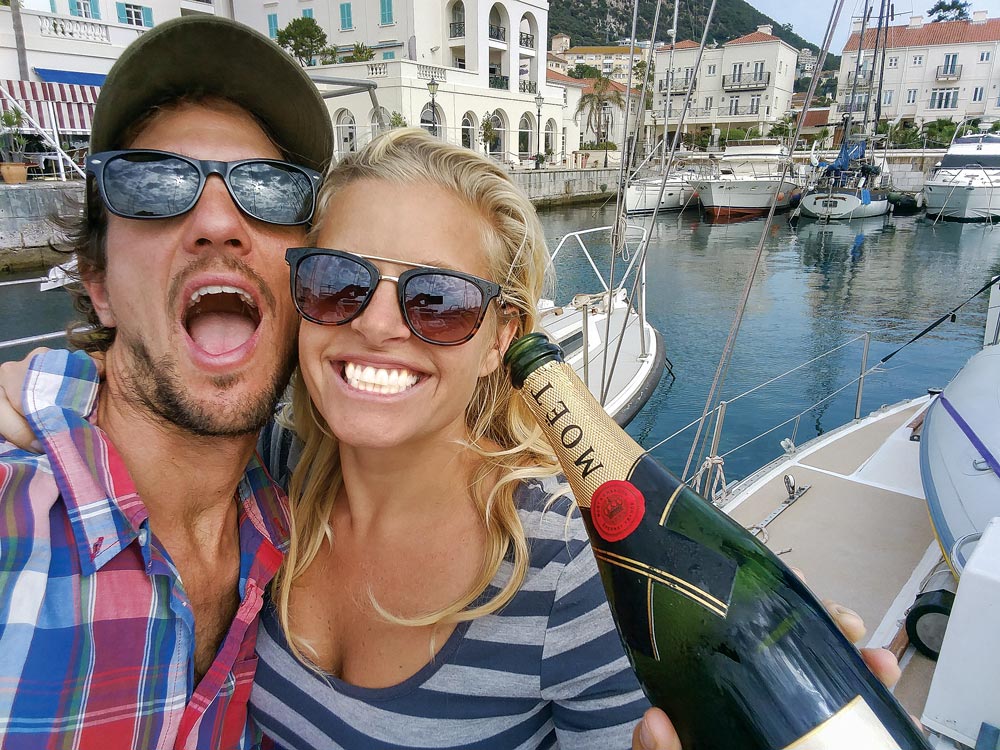
Compared to the New World sailing we are familiar with, every destination within the Med is well-steeped in the pages of history. Entering Grand Harbor in Malta, for example, is like sailing inside a Renaissance castle. Pulling into a sparsely populated cove in Sardinia is akin to stepping back into Italian history, but with gelato and espresso at the ready. These things, coupled with the region’s dramatic coastlines and abundant natural beauty, ensure that the Mediterranean is a world-class cruising destination no matter the weather.
And now, with the tantrums of the Mediterranean summer behind us, we are quickly learning the patterns of its winter. The cyclic winds of the Med are so well-versed that they have their own names — Scirocco, Vendaval, Levante, Meltemi, Gregale — and although they occur throughout the seasons, it’s mostly in winter that they find their stride. After loading up the GRIB files from our favorite wind sites, it seems our screen is constantly awash in hues of red, violet and magenta. These strong winds, coupled with the fact that many seaside businesses close down for the winter, mean that most sailing is seasonal. And after our last two blustery passages, we are grateful to have secured long-term berthing at a marina in Tunisia, where we intend to hunker down for the winter, and catch up on that ever-growing list of boat projects.
Zachary Krochina and his Australian wife, Clare Jenkins, are slowly sailing their 1973 Dufour 35 to the Land Down Under.





